Private Lenders vs. Traditional Banks: What’s Safer for Borrowers?
In today’s high-interest-rate environment, many real estate investors and business owners are bypassing traditional banks...-Rafael Benavente
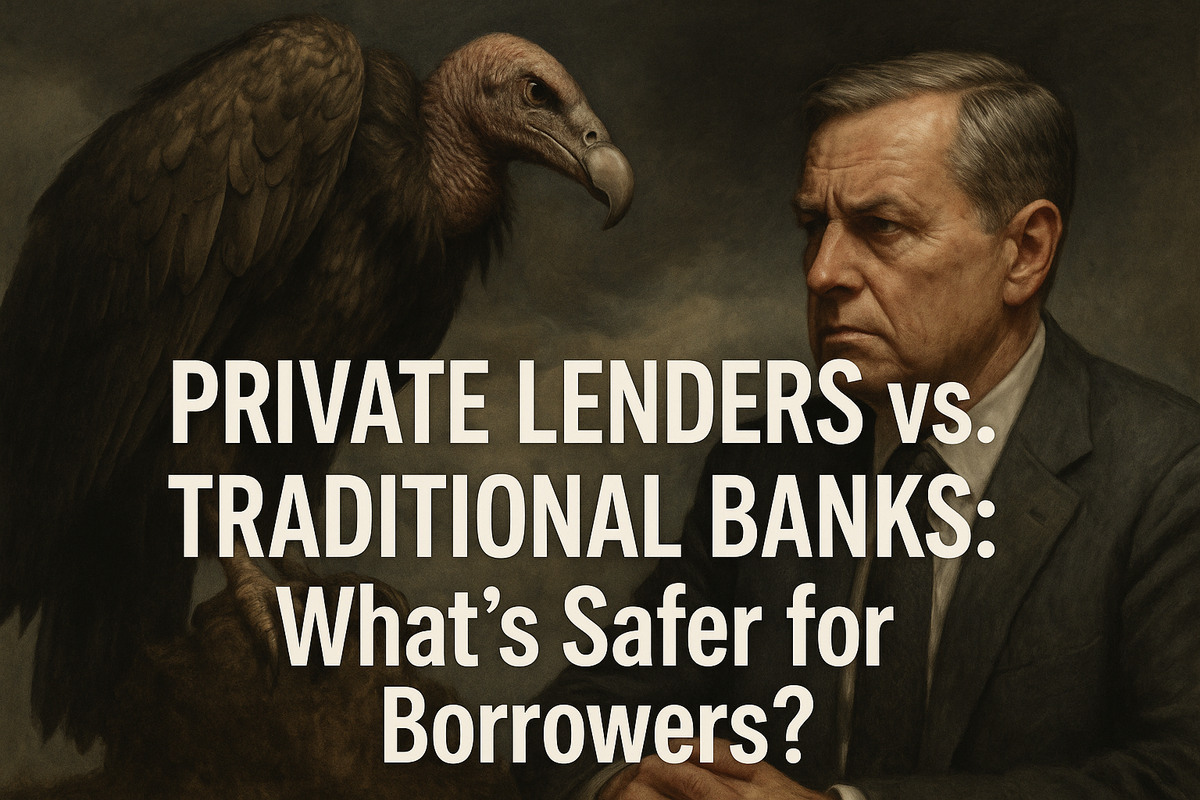
Title: “Private Lenders vs. Traditional Banks: What Borrowers Need to Know in 2025”
Introduction
In today’s high-interest-rate environment, many real estate investors and business owners are bypassing traditional banks and turning to private lenders for fast capital. These lenders — often structured as hedge funds, family offices, or boutique financing firms — offer speed and flexibility, but not without significant risks.
This blog explores the benefits and dangers of working with private lenders versus banks, what to watch out for in loan terms, and how borrowers can protect themselves — especially when navigating aggressive loan enforcement tactics.
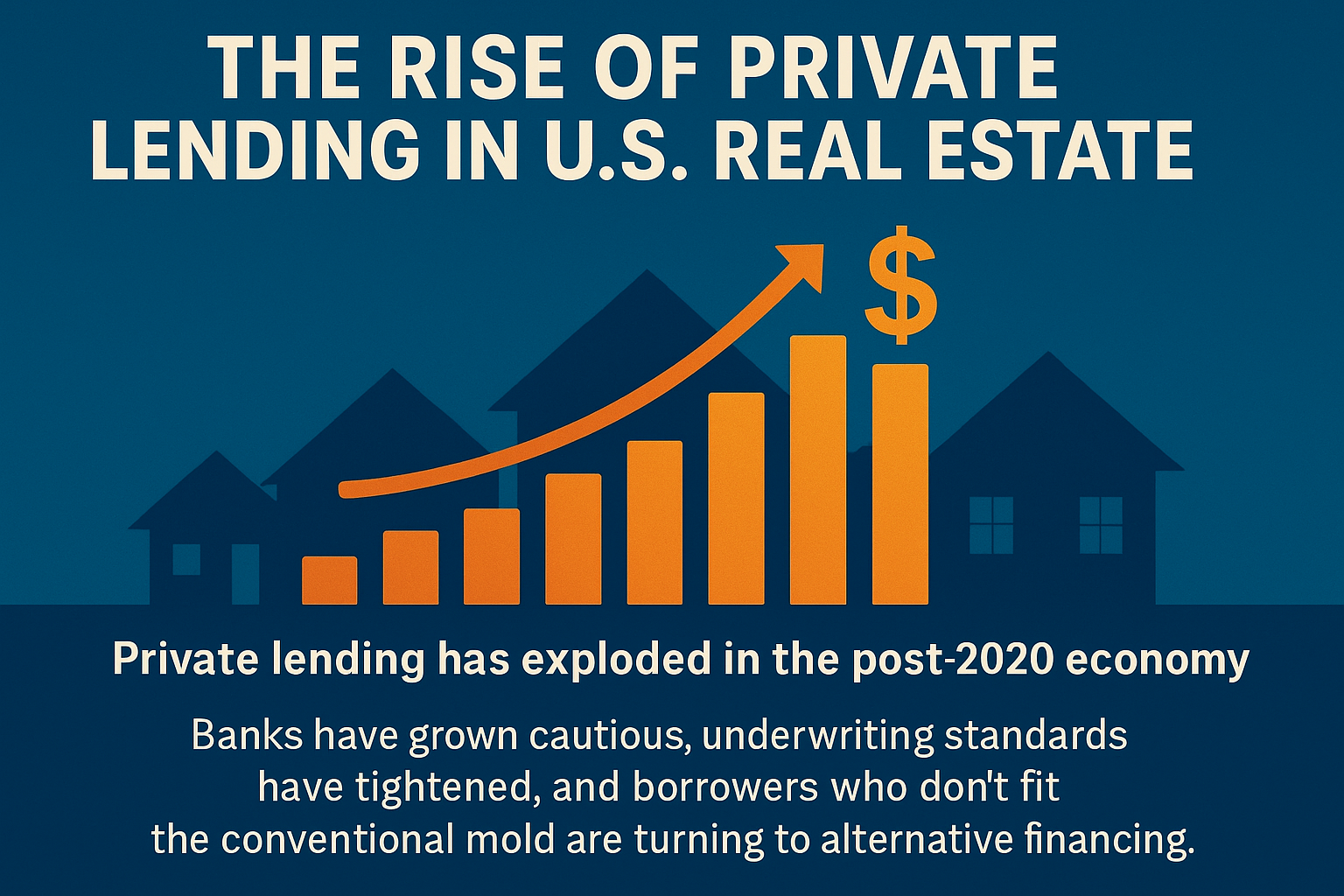
I. The Rise of Private Lending in U.S. Real Estate
Private lending has exploded in the post-2020 economy. Banks have grown cautious, underwriting standards have tightened, and borrowers who don’t fit the conventional mold are turning to alternative financing.
Why Private Lenders Appeal to Borrowers:
- Speed: Closings in as little as a few days.
- Flexible Structures: Interest-only loans, balloon payments, cross-collateralization.
- Less Focus on Credit: Approval is often based on asset value, not personal FICO score.
But the Tradeoffs Include:
- Much Higher Rates: Often between 9% and 15% annually.
- Enforcement Risk: Missed payments can trigger foreclosure with little warning.
- Opaque Terms: Some lenders include confusing default clauses or aggressive penalty structures.
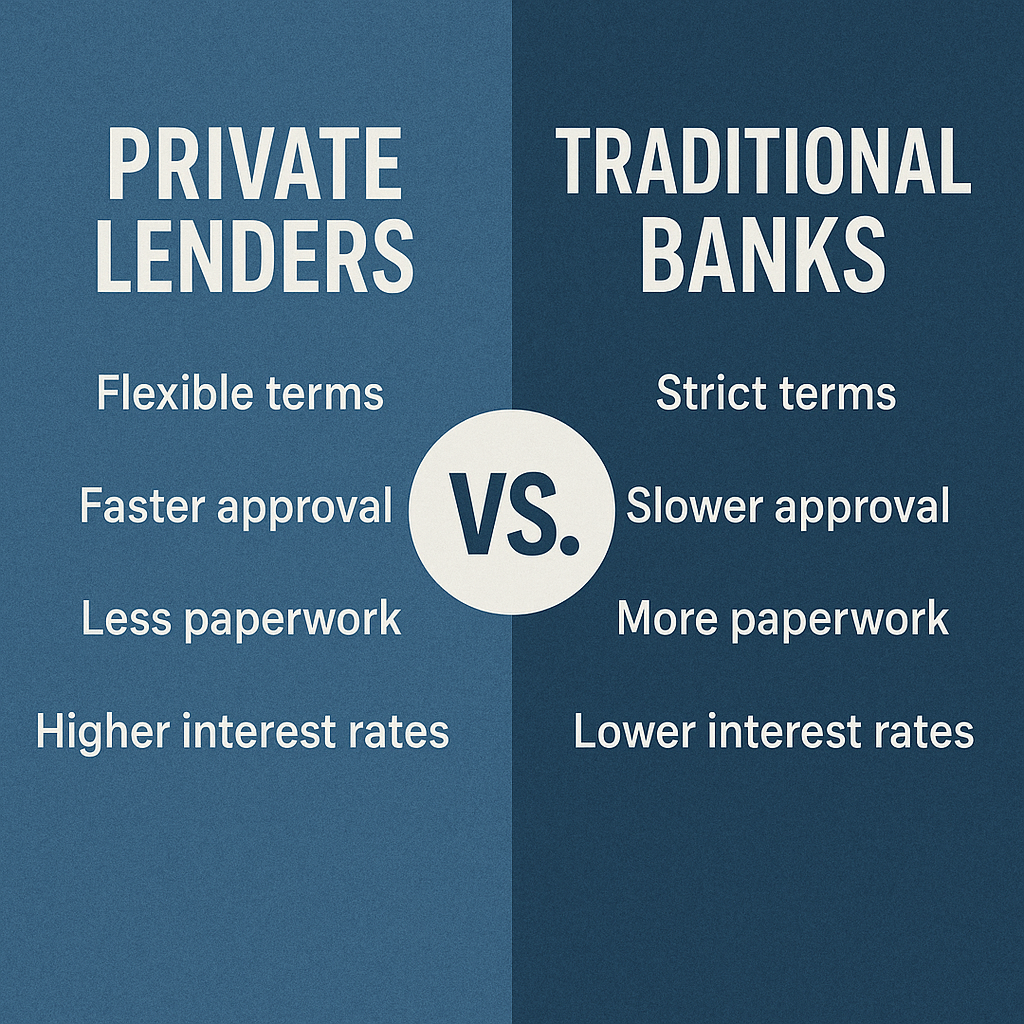
II. Traditional Banks: Conservative But Reliable
While private lenders offer speed, banks offer stability. FDIC-backed institutions provide low-cost, fully regulated lending with predictable processes.
Bank Advantages:
- Lower Rates: Often 5%–7% with strong credit.
- Stable Terms: Government oversight ensures clear disclosures and compliance.
- Grace Periods: Banks are more likely to negotiate during hardship.
Bank Drawbacks:
- Slow Process: 45–90 days is typical from application to funding.
- Strict Underwriting: Rejections based on income, debt ratio, or credit history.
- Rigid Structures: Few options for non-traditional borrowers.

III. The Grey Area: When Private Lenders Act Like Enforcers
While many private lenders operate fairly, some boutique funds have gained reputations for harsh collection tactics. Borrowers often don’t realize how fast things can spiral — especially when a single missed payment is treated as grounds for immediate foreclosure.
In some cases, these lenders rely heavily on litigation as a collection strategy, with frequent lawsuits against borrowers, including those who simply ask for extensions or workout agreements.
These behaviors may be visible in public court dockets and legal databases, where repeated foreclosure filings or breach-of-contract suits appear across multiple counties. This pattern underscores the need for extreme caution.
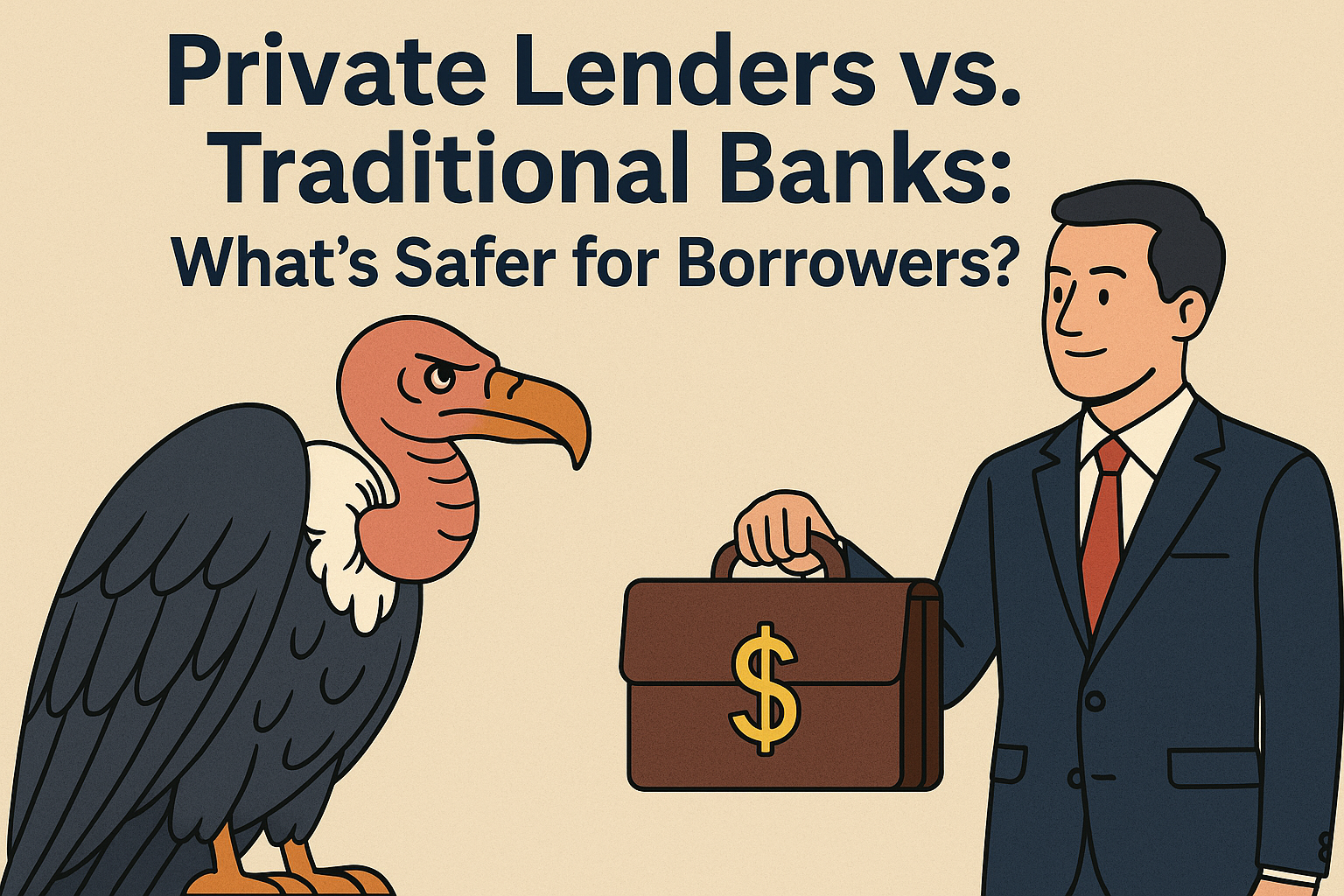
IV. Personal Guarantees: A Double-Edged Sword
Many private lenders — especially those lending to LLCs or trusts — require a personal guarantee. This allows them to go after your personal assets if the business entity defaults.
How to Limit Risk:
- Negotiate Guarantee Carveouts: For example, only enforceable in cases of fraud or misrepresentation.
- Use Proper Entity Structuring: Isolate risk within LLCs.
- Avoid Cross-Collateralization: Where a default on one asset affects others.
- Review Legal Terms Line by Line: With qualified counsel.

V. When Things Go Wrong: How Chapter 11 Can Help
For borrowers facing aggressive enforcement, one legal tool can buy time and restructure debts: Chapter 11 bankruptcy.
Why It Matters:
- Automatic Stay: Halts all lawsuits, foreclosures, and collection efforts instantly.
- Debt Restructuring: Terms can be renegotiated through a court-approved plan.
- Property Protection: Keeps appreciating assets out of foreclosure while you reorganize.
- Creditor Leverage: Puts all parties at the same table.
Even individual investors — not just big corporations — can file Chapter 11 and use it to resolve unmanageable debt.
VI. Red Flags When Vetting a Private Lender
Some funds appear legitimate but use legal pressure to maximize returns. Before signing a loan agreement, take these precautions:
- Search Public Records: Google the lender’s name with terms like “lawsuit,” “foreclosure,” or “complaint.”
- Request References: Ask to speak to other borrowers.
- Check Licensing: Verify their status with your state regulator.
- Look for Hidden Clauses: Default interest, exit fees, and forced arbitration are common traps.
- Engage an Attorney: A few hours of review can save your business.

VII. A Cautionary Tale for 2025
As private capital becomes more widespread, the line between lender and litigator has blurred in some corners of the market. Borrowers are finding themselves in courtrooms just months after closing on loans, often blindsided by terms they didn’t fully understand.
The best defense is awareness:
- Read the fine print.
- Ask tough questions.
- Don’t be dazzled by fast closings or handshakes.
A reputable lender will be transparent, responsive, and open to negotiation — not predatory or punitive.
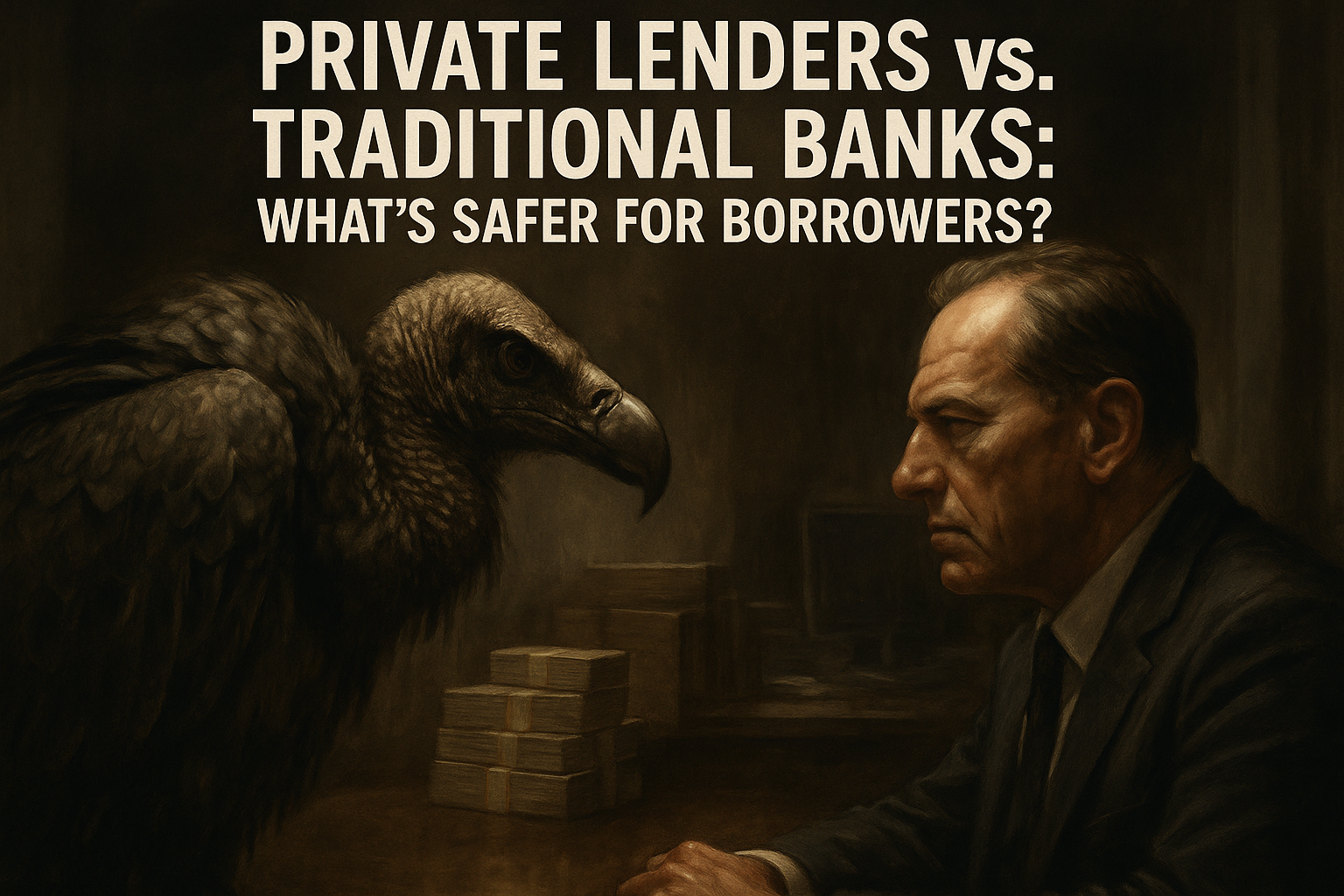
Final Thoughts: Capital With Caution
Private lending serves a critical role in today’s economy — but it’s not for the unprepared. Know your rights, build strong contracts, and surround yourself with professionals who can flag the risks before they turn into court cases.
Choosing the right lender can make or break your investment. The wrong one could put you in default — or worse, in litigation.
Related Reading:
- Why Chapter 11 Is a Smart Move for Real Estate Investors
- Insights on Legal Filings by Rafael Benavente
- Debunking Bankruptcy Myths: What Chapter 11 Really Means
Author Note
This blog is part of a financial education series by Rafael Benavente. Its purpose is to inform borrowers of their rights and responsibilities in modern lending — especially when private funds are involved. Always consult legal and financial professionals before making major debt decisions.
By Rafael Benavente
